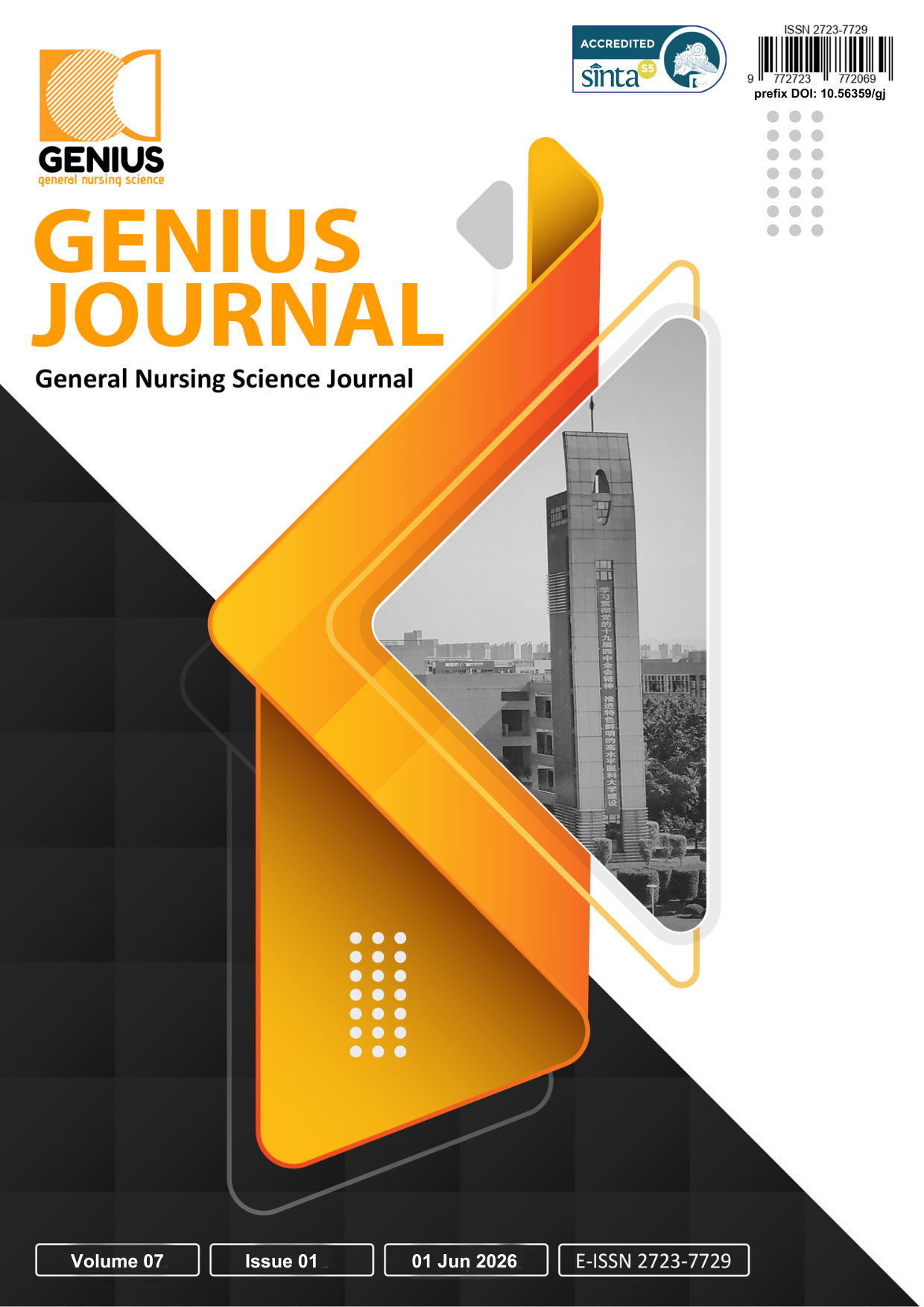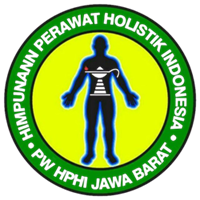The Use of the Picture Exchange Communication System to Improve Expressive Language Skills in Non-Verbal Children with Autism: A Systematic Literature Review
DOI:
https://doi.org/10.56359/gj.v7i1.824Keywords:
autism, expressive language skills, non-verbal communicationAbstract
Introduction: Children with non-verbal autism often experience barriers in developing expressive language skills, which impact their ability to communicate and engage in social interactions. The Picture Exchange Communication System (PECS) has been developed as an alternative intervention strategy aimed at enhancing functional communication in individuals with verbal limitations, including children with autism.
Objective: Children with non-verbal autism often experience barriers in developing expressive language skills, which impact their ability to communicate and engage in social interactions. The PECS has been developed as an alternative intervention strategy aimed at enhancing functional communication in individuals with verbal limitations, including children with autism.
Method: This study is a systematic review that explored seven journal databases, PubMed, ProQuest, JSTOR, Garuda, ScienceDirect, CNKI, and Wiley, from 2010 to 2024, with a population of non-verbal children with autism aged 3–12 years who received PECS intervention. The measured parameters included the number of spoken words, picture exchange ability, and functional communication. Three independent reviewers conducted screening using the PRISMA flowchart, quality assessment with the CASP Checklist, and data extraction based on author, intervention, facilitator, setting, sessions, methods, and research topics.
Result: Based on 12 articles involving 158 participants, PECS was found to be effective in enhancing expressive communication in children with non-verbal autism and contributed to improvements in the use of short phrases, comprehension of instructions, as well as the reduction of non-adaptive and aggressive behaviors. PECS therapy with a duration of 30–60 minutes across 129 sessions over 23 weeks proved to be optimal, supported by RCT studies demonstrating its effectiveness in improving individuals’ expressive language abilities.
Conclusion: PECS is an effective intervention for improving expressive language skills in children with non-verbal autism. This study emphasizes the importance of assessing a child’s developmental progress prior to implementing PECS, in order to tailor the intervention to individual needs. Furthermore, the active involvement of parents and educators is essential to ensure that PECS is implemented consistently and effectively across various settings.
Downloads
References
Alsayedhassan, B., Lee, J., Banda, D. R., Kim, Y., & Griffin-Shirley, N. (2021). Practitioners’ perceptions of the picture exchange communication system for children with autism. Disability and Rehabilitation, 43(2), 211–216. https://doi.org/10.1080/09638288.2019.1620878
Ang, C. S., & MacDougall, F. A. (2022). An Evaluation of Animal-Assisted Therapy for Autism Spectrum Disorders: Therapist and Parent Perspectives. Psychological Studies, 67(1). https://doi.org/10.1007/s12646-022-00647-w
Armstrong, K., Deloatche, K. J., Preece, K. K., & Agazzi, H. (2015). Combining parent-child interaction therapy and visual supports for the treatment of challenging behavior in a child with autism and intellectual disabilities and comorbid epilepsy. Clinical Case Studies, 14(1). https://doi.org/10.1177/1534650114531451
Boster, J. B., & McCarthy, J. W. (2018). Designing augmentative and alternative communication applications: the results of focus groups with speech-language pathologists and parents of children with autism spectrum disorder. Disability and Rehabilitation: Assistive Technology, 13(4). https://doi.org/10.1080/17483107.2017.1324526
Cabielles-Hernandez, D., Perez-Perez, J. R., Paule-Ruiz, Mp., & Fernandez-Fernandez, S. (2017). Specialized Intervention Using Tablet Devices for Communication Deficits in Children with Autism Spectrum Disorders. IEEE Transactions on Learning Technologies, 10(2). https://doi.org/10.1109/TLT.2016.2559482
de Almeida Santos, P., Bordini, D., Scattolin, M., da Cunha Asevedo, G. R., Caetano, S. C., Paula, C. S., Perissinoto, J., & Tamanaha, A. C. (2021). The Impact of the Implementation of the Picture Exchange Communication System – PECS on Understanding Instructions in Children with Autism Spectrum Disorders. CODAS, 33(2), 1–5. https://doi.org/10.1590/2317-1782/20202020041
Dicky Listin Quarta. (2024). Picture Exchange Communication System (PECS) to Enhance the Expressive Language Skills of Children with Developmental Language Disorders. Schema: Journal of Psychological Research, 9(01), 19–27. https://doi.org/10.29313/schema.v9i01.4134
Firmansyah, A., Andriani, A., Najamuddin, N., & Setiawan, H. (2020). Relationship Of Parents Role With Social Skills Of Mental Retardation Children. Pelita Health and Education Journal, 1(1), 1–5.
Flanagan, H. E., Smith, I. M., & Davidson, F. (2019). The Assessment of Phase of Preschool Language: Applying the language benchmarks framework to characterize language profiles and change in four-to five-year-olds with autism spectrum disorder. Autism and Developmental Language Impairments, 4. https://doi.org/10.1177/2396941519864084
Forbes, H. J., Travers, J. C., & Vickers Johnson, J. (2024). A systematic review of acquisition and mastery of skills taught using the Picture Exchange Communication System. AAC: Augmentative and Alternative Communication, 40(2). https://doi.org/10.1080/07434618.2024.2302154
Frank, H. E., Becker-Haimes, E. M., & Kendall, P. C. (2020). Therapist training in evidence-based interventions for mental health: A systematic review of training approaches and outcomes. In Clinical Psychology: Science and Practice (Vol. 27, Issue 3). https://doi.org/10.1111/cpsp.12330
Hu, X., & Lee, G. (2019). Effects of PECS on the Emergence of Vocal Mands and the Reduction of Aggressive Behavior Across Settings for a Child With Autism. Behavioral Disorders, 44(4), 215–226. https://doi.org/10.1177/0198742918806925
Huda, M. H., Widianti, W., & Setiawan, H. (2022). Differences in Caregivers’ Burden in Caring for Children with Intellectual Disabilities who Attend Formal and Non-Formal Education. International Journal of Nursing and ….
Klein, B., & Kraus de Camargo, O. (2018). A Proposed Functional Abilities Classification Tool for Developmental Disorders Affecting Learning and Behaviour. Frontiers in Education, 3. https://doi.org/10.3389/feduc.2018.00002
Kojovic, N., Hadid, L. Ben, Franchini, M., & Schaer, M. (2019). Sensory processing issues and their association with social difficulties in children with Autism spectrum disorders. Journal of Clinical Medicine, 8(10). https://doi.org/10.3390/jcm8101508
Koudys, J., Perry, A., Magnacca, C., & McFee, K. (2023). Predictors of Picture Exchange Communication System (PECS) outcomes. Autism and Developmental Language Impairments, 8. https://doi.org/10.1177/23969415231221516
López-Bouzas, N., del Moral-Pérez, M. E., & Castañeda-Fernández, J. (2024). Communicative competence in students with ASD: Interaction and immersion in a Gamified Augmented Environment. Education and Information Technologies, 29(11). https://doi.org/10.1007/s10639-023-12319-x
Lordan, R., Storni, C., & De Benedictis, C. A. (2021). Autism Spectrum Disorders: Diagnosis and Treatment. In Autism Spectrum Disorders. https://doi.org/10.36255/exonpublications.autismspectrumdisorders.2021.diagnosis
Malinverni, L., Mora-Guiard, J., Padillo, V., Valero, L., Hervás, A., & Pares, N. (2017). An inclusive design approach for developing video games for children with Autism Spectrum Disorder. Computers in Human Behavior, 71. https://doi.org/10.1016/j.chb.2016.01.018
Miftahurrohmah, L., & Hasibuan, R. (2024). Urgensi Pengenalan Bahasa Ekspresif dan Berhitung pada Anak Usia Dini. Jurnal CARE (Children Advisory Research and Education), 11(2), 50. https://doi.org/10.25273/jcare.v11i2.19919
Moorcroft, A., Scarinci, N., & Meyer, C. (2019). A systematic review of the barriers and facilitators to the provision and use of low-tech and unaided AAC systems for people with complex communication needs and their families. In Disability and Rehabilitation: Assistive Technology (Vol. 14, Issue 7). https://doi.org/10.1080/17483107.2018.1499135
Nengsih, N. (2019). Hubungan Penyesuaian Diri Orangtua Terhadap Perilaku Temper Tantrum Anak Autis di Yayasan Bima Sumatera Barat. ENLIGHTEN (Jurnal Bimbingan Dan Konseling Islam), 2(1). https://doi.org/10.32505/enlighten.v2i1.1214
Pasco, G., & Tohill, C. (2011). Predicting progress in Picture Exchange Communication System (PECS) use by children with autism. International Journal of Language and Communication Disorders, 46(1), 120–125. https://doi.org/10.3109/13682822.2010.484851
Raubenheimer, M., Geertsema, S., Le Roux, M., & Graham, M. A. (2024). The Influence of Vestibular Input on the Responses of Children with Autism Spectrum Disorder Using Picture Exchange Communication to Request. Journal of Occupational Therapy, Schools, and Early Intervention, 17(2). https://doi.org/10.1080/19411243.2023.2177238
Safi, M. F., Alshamsi, M., & Opoku, M. P. (2022). Parenting children with autism spectrum disorder in the United Arab Emirates: Exploring perceptions towards using the picture exchange communication system to enhance the development of children with autism spectrum disorder. BMC Psychology, 10(1). https://doi.org/10.1186/s40359-022-00932-3
Saihu, S. (2019). KOMUNIKASI PENDIDIK TERHADAP ANAK BERKEBUTUHAN KHUSUS DI SEKOLAH KHUSUS ASY-SYIFA LARANGAN. Andragogi: Jurnal Pendidikan Islam Dan Manajemen Pendidikan Islam, 1(3). https://doi.org/10.36671/andragogi.v1i3.66
Schreibman, L., & Stahmer, A. C. (2014). A randomized trial comparison of the effects of verbal and pictorial naturalistic communication strategies on spoken language for young children with autism. Journal of Autism and Developmental Disorders, 44(5), 1244–1251. https://doi.org/10.1007/s10803-013-1972-y
Sturrock, A., Adams, C., & Freed, J. (2021). A Subtle Profile With a Significant Impact: Language and Communication Difficulties for Autistic Females Without Intellectual Disability. Frontiers in Psychology, 12. https://doi.org/10.3389/fpsyg.2021.621742
Tamanaha, A. C., Olivatti, D. O. F., Silva, S. C. da, Vieira, S. C. P., & Perissinoto, J. (2023). Picture Exchange Communication System (PECS) Implementation Program for children with autism spectrum disorder. CoDAS, 35(4). https://doi.org/10.1590/2317-1782/20232021305en
Taryadi, T. (2018). Improved communication skills of children with Autism Spectrum Disorder using Augmented Reality based on PECS (Picture Exchange Communication System). JAICT, 3(2). https://doi.org/10.32497/jaict.v3i2.1338
Tedjawidjaja, D., & Hartiani, F. (2021). Efektivitas functional communication training dalam meningkatkan perilaku meminta pada anak dengan autism spectrum disorder. Jurnal Ilmiah Psikologi Terapan, 9(2). https://doi.org/10.22219/jipt.v9i2.13533
Thiemann-Bourque, K., Brady, N., McGuff, S., Stump, K., & Naylor, A. (2016). Picture exchange communication system and pals: A peer-mediated augmentative and alternative communication intervention for minimally verbal preschoolers with autism. Journal of Speech, Language, and Hearing Research, 59(5). https://doi.org/10.1044/2016_JSLHR-L-15-0313
Thomas, H. R., Rooney, T., Cohen, M., Bishop, S. L., Lord, C., & Kim, S. H. (2021). Spontaneous Expressive Language Profiles in a Clinically Ascertained Sample of Children With Autism Spectrum Disorder. Autism Research, 14(4). https://doi.org/10.1002/aur.2408
Tian, J., Gao, X., & Yang, L. (2022). Repetitive Restricted Behaviors in Autism Spectrum Disorder: From Mechanism to Development of Therapeutics. In Frontiers in Neuroscience (Vol. 16). https://doi.org/10.3389/fnins.2022.780407
Travis, J., & Geiger, M. (2010). The effectiveness of the picture exchange communication system (PECS) for children with autism spectrum disorder (ASD): A South African pilot study. Child Language Teaching and Therapy, 26(1), 39–59. https://doi.org/10.1177/0265659009349971
Vistasari, R., & Patria, B. (2019). Program PECS (Picture Exchange Communication System) untuk Meningkatkan Kemampuan Berbicara Terstruktur pada Anak Autis. Gadjah Mada Journal of Professional Psychology (GamaJPP), 5(1), 94. https://doi.org/10.22146/gamajpp.48590
Wendt, O., Hsu, N., Simon, K., Dienhart, A., & Cain, L. (2019). Effects of an iPad-based Speech-Generating Device Infused into Instruction with the Picture Exchange Communication System for Adolescents and Young Adults with Severe Autism Spectrum Disorder. Behavior Modification, 43(6). https://doi.org/10.1177/0145445519870552
Zohoorian, Z., Zeraatpishe, M., & Matin sadr, N. (2021). Effectiveness of the Picture Exchange Communication System in Teaching English Vocabulary in Children with Autism Spectrum Disorders: A single-subject study. Cogent Education, 8(1). https://doi.org/10.1080/2331186X.2021.1892995
Downloads
Published
How to Cite
Issue
Section
License
Copyright (c) 2025 Aqshal Ilham Fahliza, Kevin Septia Pradiansyah, Dika Rhousnaka, Ayu Endang Purwati, Andan Firmansyah, Irpan Ali Rahman, Henri Setiawan

This work is licensed under a Creative Commons Attribution 4.0 International License.





















